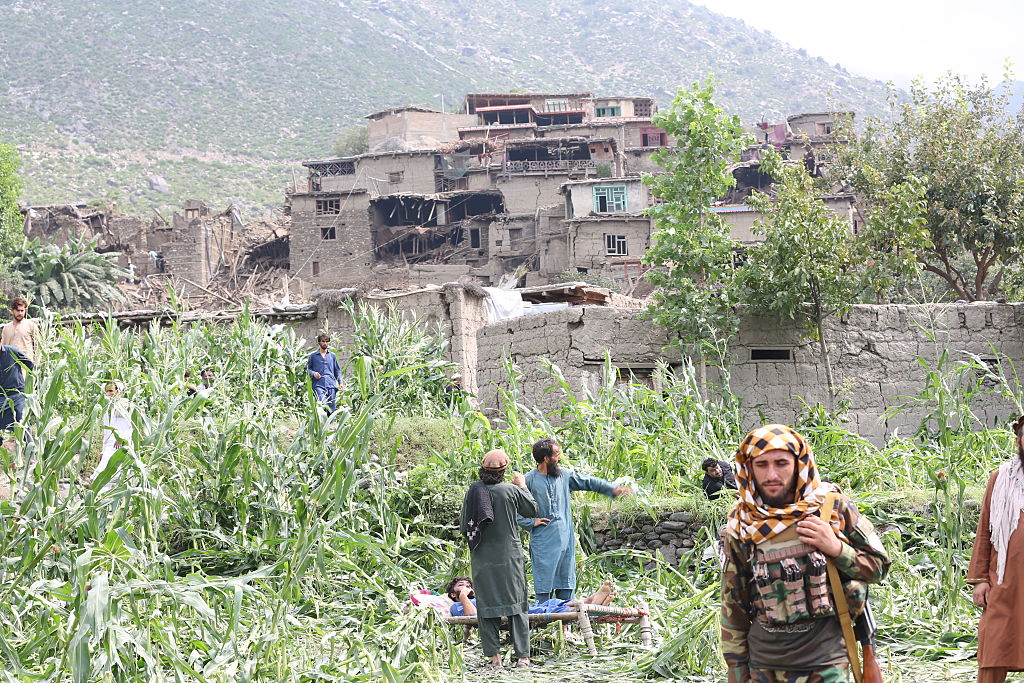Afghanistan airdropped commandos on Wednesday to pull survivors from the rubble of homes in mountainous eastern areas ravaged by earthquakes this week that have killed 1,400, as it ramped up efforts to deliver food, shelter and medical supplies.
The first earthquake of magnitude 6, one of Afghanistan’s deadliest in recent years, unleashed widespread damage and destruction when it struck the provinces of Kunar and Nangarhar around midnight on Sunday at a shallow depth of 10 km (6 miles).
A second quake of magnitude 5.5 on Tuesday evening caused panic and interrupted rescue efforts as it sent rocks sliding down mountains and cut off roads to villages in remote areas.
Dozens of commando forces were being airdropped at sites where helicopters cannot land, to help carry the injured to safer ground, Ehsanullah Ehsan, the head of disaster management in Kunar, said in a text message.
Authorities have set up a camp to coordinate supplies and emergency aid, while two centres were overseeing transfer of the injured, burial of the dead and the rescue of survivors, Ehsan added.
Earlier, rescuers used helicopters to ferry the wounded to hospitals, battling with mountainous terrain and harsh weather to reach quake-hit villages along the border with Pakistan, where the tremors flattened mudbrick homes.
The toll stands at 1,411 deaths, 3,124 injuries and more than 5,400 destroyed homes, the Taliban administration said. The United Nations has warned the toll could rise, with people trapped under rubble.
ENTIRE HOUSEHOLDS WIPED OUT
In some villages in Kunar province, entire households were wiped out. Survivors sifted through rubble looking for families, carried bodies on woven stretchers and dug graves with pickaxes.
“Two of my children have not yet been pulled out from under the rubble,” said Mir Salam Khan, who lives in Mazar Dara village in Kunar, adding that his daughter and son remained buried. “On Monday, my dead wife was taken out from under the rubble, but my children are still beneath it.”
Ruhila Mateen from Aseel, a humanitarian tech platform that has teams on the ground, said conditions were worsening by the hour for survivors, with women and children especially vulnerable.
“This is not only a crisis of collapsed buildings but of survival itself. Families are fractured, children are in the cold, and survivors have nothing left,” Mateen said.
A Reuters journalist, who arrived in Mazar Dara before Tuesday’s tremors, saw every home had been damaged or destroyed, while people dug through rubble in the desperate search for those still trapped.
The second earthquake levelled homes that had been only partially damaged by the first, residents said.
Resources for rescue and relief work are tight in the impoverished nation of 42 million people, which has received limited global help after the disaster.
The country has been badly hit by U.S. President Donald Trump’s funding cuts to foreign aid, while donor frustration over the Taliban’s policies toward women and curbs on aid workers have worsened its isolation.
Flimsy or poorly-built homes made of dry masonry, stone and timber gave little protection from the quakes, in ground left unstable by days of heavy rain, according to the U.N. Office for the Coordination of Humanitarian Affairs (OCHA).
The agency, which is pulling together the global disaster effort, called for emergency shelter, food assistance and sanitation facilities, along with drinking water, critical medical supplies and other items.
An official of international group Doctors without Borders (MSF), which distributed trauma kits at two hospitals in the affected areas, also called for more humanitarian assistance.
“We saw many patients treated in the corridors and health workers in need of supplies,” said Dr Fazal Hadi, MSF’s deputy medical coordinator in Afghanistan, adding that the hospitals had been working at full capacity even before the quake.
Afghanistan is prone to deadly earthquakes, particularly in the Hindu Kush mountain range, where the Indian and Eurasian tectonic plates meet.
(Reuters)














